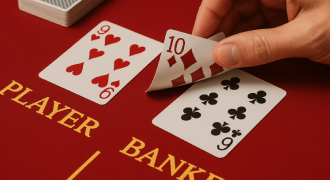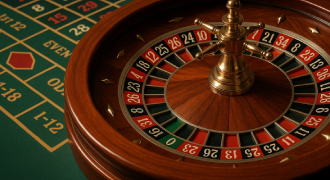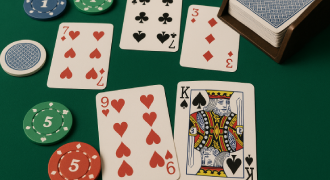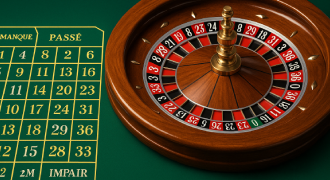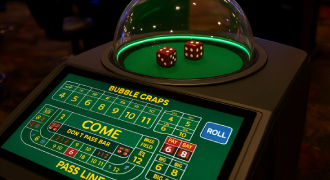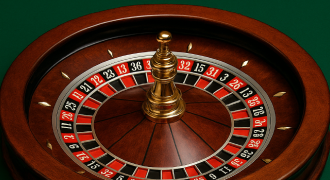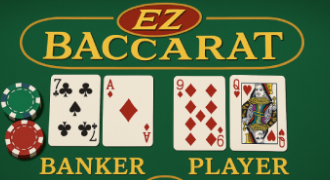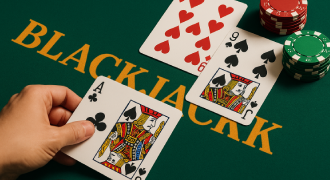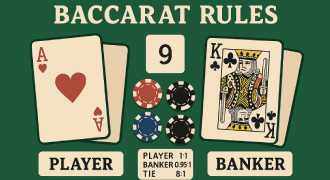Blackjack Rules
Blackjack is one of the most popular and enduring card games in the casino world, combining strategy, probability, and a touch of luck. At its core, the aim is simple: beat the dealer’s hand without exceeding a total of 21. Understanding Blackjack rules is essential, as they dictate everything from card values to when you can hit, stand, double down, or split. The game’s mix of straightforward play and deep strategic potential makes it appealing to both beginners and seasoned players alike.
Core Blackjack Rules & Game Mechanics
Blackjack is a target-score card game where each hand aims for 21 without going over; player totals compete directly against the dealer’s total. You receive two cards, then choose actions (hit, stand, double, split) while the dealer follows fixed dealer rules. The basic Blackjack rules state that you act first, so busting immediately loses, even if the dealer later busts. To keep your process tight, treat every hand like a micro–business case: evaluate risk, select the highest-EV option, and commit.
How Card Values Work in Blackjack
All number cards are worth their printed number; face cards are worth 10; Aces are 1 or 11 depending on what maximizes your hand. These card values drive both hand classification and action selection. A “soft” hand includes an Ace valued at 11; a “hard” hand contains no flexible Ace. Understanding these inputs is foundational to Blackjack card game rules, because every downstream decision—hit, stand, or double—anchors on the current total type.
Standard Blackjack Payouts Explained
A natural Blackjack (Ace + 10-value) typically pays 3:2, while ordinary wins pay 1:1. Even-money or 6:5 tables materially reduce returns; confirm the placard before you buy in. Blackjack insurance rules pay 2:1 if you take insurance and the dealer has a game; apply the insurance rule sparingly because it’s usually negative EV without specific count data. Use the following mini Blackjack chart rules to operationalize payouts fast.
|
Outcome |
Typical Payout |
|
Natural Blackjack |
3:2 |
|
Win (non-Blackjack) |
1:1 |
|
Insurance (dealer Blackjack) |
2:1 |
|
Push |
0 (no change) |
Cards, Decks, and Game Setup Overview
Most tables use 6–8 decks in a shoe; single- and double-deck games exist but often offset advantages with tighter Blackjack table rules. The round starts when all players place bets; cards are dealt face up to players, one face down to the dealer in European sets, or with a hole card in American sets. The game flow is consistent: bet → deal → player actions → dealer resolves. Before your first hand, scan the felt and placards for decks used, payout schedule, and splitting/doubling permissions.
Hit, Stand, Double Down & Split: Explained Simply
Use this quick-action glossary to standardize execution under pressure.
- Hit: Take another card to improve a weak or mediocre total.
- Stand: Lock your hand when further hits likely bust or add little value.
- Double Down: Double your bet, take exactly one card; reserve for strong totals versus weak dealer upcards.
- Split: If you receive a pair, you may create two hands; consult the Blackjack split rules at that table.
In practice, the split option typically allows re-splitting to a cap and restricts doubling after split at some venues. Follow simple Blackjack rules heuristics—split Aces and 8s; never split 10s—unless table specifics override. Where permitted, double down on 10 or 11 against low dealer upcards to maximize value density per chip. Align your action set with posted Blackjack rules game to avoid surprises mid-hand.
What’s a Push or Tie in Blackjack?
A push occurs when your final total equals the dealer’s final total; your wager neither wins nor loses. Funds return to your stack and the next round begins with fresh decision rights. Some casino Blackjack rules introduce edge-case pushes on multi-hand resolutions after splits; read the box rules if something looks atypical. Operational takeaway: push equals zero delta to bankroll and should not distort your risk appetite in subsequent rounds.
|
Your Total |
Dealer Total |
Outcome |
|
20 |
20 |
Push |
|
18 (soft) |
18 (hard) |
Push |
|
21 (non-BJ) |
21 (non-BJ) |
Push |
Comparing Blackjack Rule Sets: American vs European
American Blackjack deals players two cards and the dealer one upcard plus a face-down hole card; the dealer peeks for Blackjack on Ace/10 upcards. European Blackjack deals the dealer one upcard only and draws the second card after players act, increasing player risk on doubles and splits. Because the rules of Blackjack differ here, EV shifts: peek rules reduce catastrophic doubles into dealer game. When evaluating a table, treat “American vs European” as a first-order selection criterion before you stake chips.
|
Feature |
American |
European |
|
Dealer Hole Card |
Yes (peek on A/10) |
No |
|
Double After Split |
Often Allowed |
Often Restricted |
|
Early Surrender |
Rare |
Rare |
|
Effect on EV |
Slightly Better |
Slightly Worse |
How Rules Influence the House Edge
Every toggle—number of decks, payout ratio, doubling/splitting permissions—moves the house edge. 3:2 vs 6:5 on naturals is a major lever; so is whether doubling is allowed on any two cards. Restrictions on re-splitting Aces or doubling after split raise the edge; liberal rules drag it down. In short, the rules of Blackjack are not cosmetic; they are pricing.
|
Rule Feature |
Typical Impact on House Edge |
|
Blackjack pays 6:5 |
Increases noticeably |
|
Dealer hits soft 17 |
Increases slightly |
|
Double after split allowed |
Decreases slightly |
|
Re-split Aces allowed |
Decreases slightly |
|
Fewer decks (e.g., 1–2) |
Decreases, often offset by others |
Dealer Behavior: Stand on Soft 17 or Take a Hit?
“Soft 17” means a hand like A-6 where the Ace counts as 11; soft hands can draw without immediate bust risk. When dealer rules say “stand on soft 17” (S17), the dealer freezes there; when they say “hit soft 17” (H17), the dealer draws one or more cards. H17 marginally boosts the house because more 17s convert into 18–21. Confirm this in the box rules because it governs how you calibrate doubles and stands under the posted Blackjack game rules.
|
Policy |
Dealer Action |
Strategic Note |
|
S17 |
Stand |
Slightly better for player |
|
H17 |
Hit |
Slightly better for house |
Frequent Player Misconceptions About Blackjack Rules
Many players assume insurance is a safety net; without count knowledge it’s a cost center, not a hedge. Others misread “soft” vs “hard” and misplay hard totals like 12 vs 2 or 3, which are closer calls than they appear. A common myth suggests never hitting 16; in reality, context drives the decision—upcard matters, composition matters. Finally, some treat table signage as décor; it’s the spec sheet that defines operational constraints and expected Blackjack rules value.
Myth Busters (Bulleted)
- Insurance is not automatic protection; it’s a side bet.
- Soft ≠ safe; soft 18 vs 9 often hits.
- Hard 12 vs 2/3 can stand or hit depending on composition.
- Re-splitting Aces is a rule, not a right; check the placard.
Blackjack Online vs Land-Based: Rule Differences
Online tables often display full specs in an info panel, while brick-and-mortar rooms post them on the felt or placard. RNG and live-dealer products can offer friendlier doubles or automatic re-splits compared with tight pit floors. Shuffle Blackjack rules tech and penetration vary; confirm deck count because it changes variance and optimal aggression. In any environment, map setup, payouts, and restrictions before play to ensure your decisions align with the table’s governance.
Final Thoughts: Master the Rules, Boost Your Game
Treat table selection as step zero, not an afterthought; the wrong table taxes your ROI before the first deal. Audit the rule sheet like a contract: payout on naturals, S17 vs H17, double-after-split, re-split Aces, surrender, deck count, and min/max limits. Align those parameters with your risk budget and target EV, then lock in a stake-sizing plan that fits volatility. Internalize the Blackjack rules chart, codify your “if–then” playbook for hard totals and soft hands, and execute without variance-driven improvisation.
Operationalize a feedback loop so your decisions get sharper every session. Track misplays by situation (e.g., soft 18 vs 9, hard 12 vs 3) and run quick post-mortems to remove repeat errors. Maintain bankroll hygiene—keep unit size disciplined, respect stop-loss/session caps, and treat pushes as neutral signals, not triggers to chase. With Blackjack rules governance tight and execution consistent, you convert table specs into measurable edge instead of leaving value on the felt.
FAQ
What are the essential Blackjack rules to know?
Know payout for naturals, H17 vs S17, doubling and splitting permissions, and whether the dealer peeks.
What separates European and American Blackjack?
American uses a hole card with peek; European draws the dealer’s second card after player actions.
Are there limits to splitting or doubling down?
Yes—tables cap re-splits, restrict Aces, and may limit doubling after splits; read the placard.
How is a natural Blackjack paid out?
Commonly 3:2; if it’s 6:5, your expected value drops.
Does the dealer always stay on 17?
No; H17 tables require a hit on soft 17, S17 tables require a stand.
What exactly is a push in Blackjack?
A tie with the dealer; your bet returns with no profit or loss.

